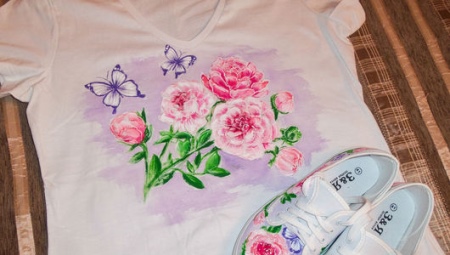Fashion for creative pictures and catchy t-shirt inscriptions never goes away. It modifies, popularizes: either cartoon characters, comic book characters, life-affirming phrases, or quotes from famous people, but the essence remains the same - something unusual, attracting attention to clothes. Do-it-yourself drawings on T-shirts will be a great alternative to the multiply printed version of the print on things from the mass market. This is an opportunity to choose the basis of any quality and color, and express your personality. A t-shirt, which is painted with one's own hand, can be a business card of the owner or a great gift for a significant event.

How to make a print with acrylic paints?
Permanent drawing at home can be applied by the method of cold or hot batik, felt-tip pens on fabric, spray cans, using decals, but the most reliable and popular is acrylic. There are several ways to print with acrylic paints:
- Copying a picture from paper. This method does not require special artistic talents, only accuracy. The drawing can be done by hand or printed on a printer. All contours should be dark in color, which is visible through the fabric of the T-shirt. For convenience, it is better to glue the finished pattern onto thick cardboard, pull the T-shirt evenly over it and fix it with pins on the edges. Next, you need to carefully trace the contours with a simple pencil or felt-tip pens on the fabric, and proceed to fill with color;

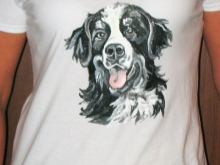
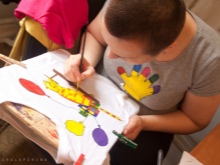
- Freehand drawing on fabric. This is a technique for self-confident, which gives more scope for imagination. You can pre-draw the contours, or you can immediately start working with paints, creating a work of art on your T-shirt.The method is more suitable for light materials, and in cases where some negligence in the drawing is acceptable;

- Application by stencil. The easiest way to guarantee a good result. Stencil drawing is convenient because the picture can be copied multiple times on t-shirts, for example, for the whole family, the KVN school team, uniforms for competitions or just a group of like-minded people who want to be recognizable in the crowd. To make the picture look more interesting, you can impose stencils of different sizes on each other, change the angle of inclination and color;
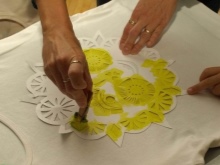
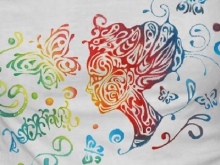
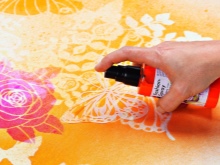
- Screen printing. Designed for complex drawings of several colors. It is applied using special inks and mesh for screen printing, roller and other tools. This method is not suitable for beginners.
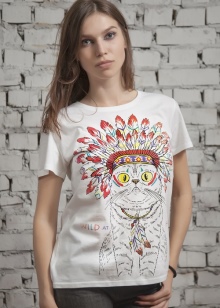
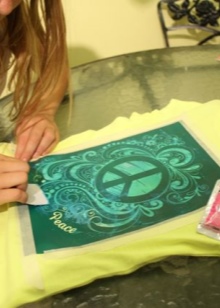

Screen painting
Of all these methods, screen painting is the most common. It is simple to implement, time-efficient and satisfactory in terms of results.
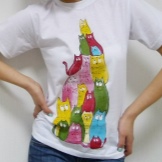
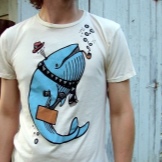
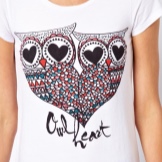
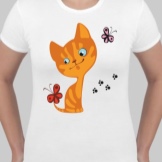
To complete the painting you will need: a cotton T-shirt, a stencil or cardboard for it, acrylic paints, a small dye roller, a tray for diluting paints, gloves, scissors or a stationery knife, masking tape, and an iron.
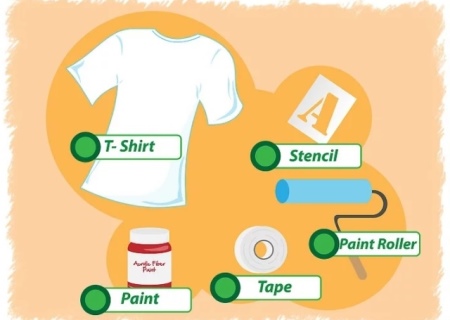
The procedure is performed step by step:
- Washing. Many people want to skip this point, but it is necessary to complete it. Acrylic paints fall best on cotton items, and cotton tends to “sit down” when washing. The picture will not decrease along with the size of the T-shirt, it will be deformed, and the work will be damaged along with the T-shirt and donated materials.
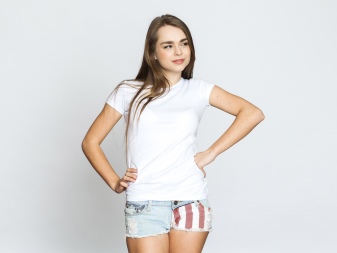
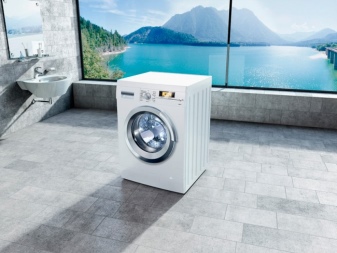
After washing, the t-shirt must be well dried and ironed so that the basis for the picture is as even as possible;
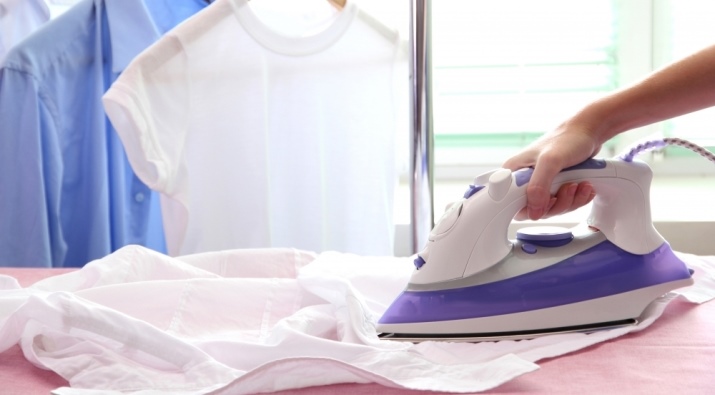
- Stencil blank. While the shirt is drying, there is time to apply the drawing on a thin cardboard. Contours must be cut very carefully, without chipping, otherwise the edge of the pattern on the fabric will turn out to be uneven. For the first attempt, you can buy a stencil in a store or paste a printout from the Internet on cardboard;
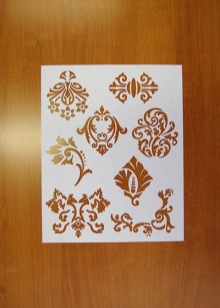

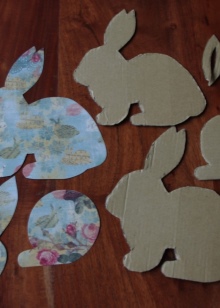
- Preparation of the work surface. For drawing a flat, solid surface, for example, a writing desk or a coffee table, is suitable. All necessary tools are placed nearby, from the side of the working hand. Acrylic is difficult to wash off, so it is better to cover the table with old newspapers, and start the creative process in old clothes;
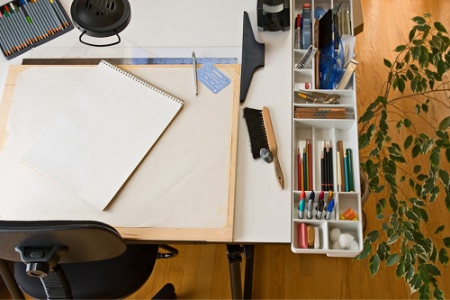
- T-shirt preparation. A clean, ironed thing needs to be placed on the work surface, straightened so that there are no wrinkles and irregularities. It is recommended that you put a thick layer of paper or cardboard inside so that the acrylic does not print on both sides of the T-shirt, unless this is suggested by the idea. Next, a stencil is applied to the t-shirt. To keep it in place during painting, the edges need to be glued with paper tape;
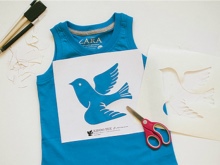
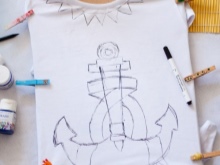

- Color dilution. So that the acrylic does not begin to dry ahead of time, pour the desired color into the tray or mix it from several different ones immediately before application. In order for the paint to lie evenly, the roller should be uniformly saturated with acrylic. To do this, they dip it several times in the tray until it gets a little heavier, and then make a test smear on a sheet of paper. If the layer is dense, you can start painting;

- Drawing a picture. With confident horizontal and vertical movements, “roll up” the stencil with a roller. You can go beyond the edges of the picture, but not beyond the edges of the paper; it will not be superfluous to apply a second coat of paint. When it dries a little, you can remove the stencil and leave the drawing to dry completely;
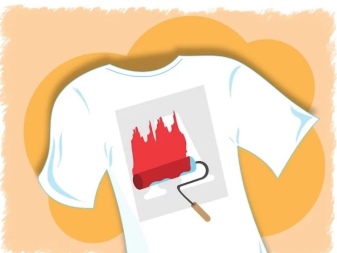
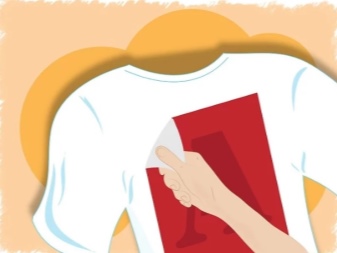
- Thermal impact. The paint is better fixed if you iron a fresh print with a hot iron through a thin cotton towel. After that, the t-shirt can be worn and washed. The first few times it is recommended to do this in cold water on your hands, and the next - in a typewriter with other things.
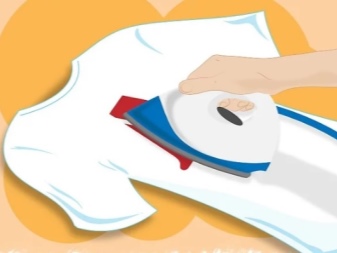
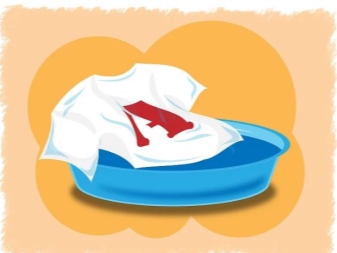
How to create an abstraction?
A boring old T-shirt can be revived with an unusual space print. Drawing stencils of the planets for this will not be needed, all that is needed is a T-shirt, acrylic, gloves, bleach in a bottle with a spray bottle and a few brushes.
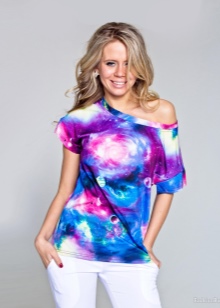


If the shirt is new, it must first be washed and dried. Old should be clean and ironed. Abstraction is best applied to fabrics of bright or dark colors, on white and light it will not look so impressive.
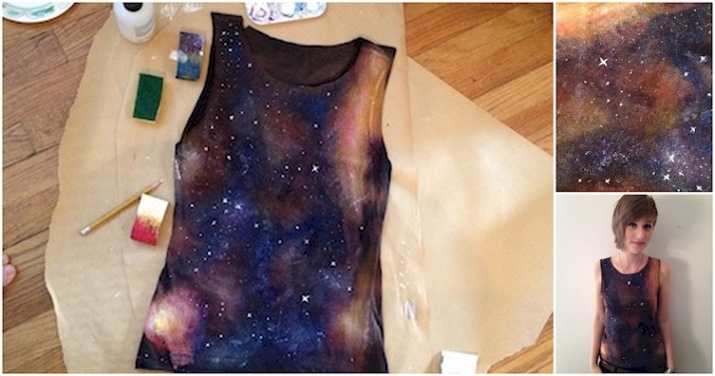
The drawing process begins with the preparation of the work surface, in this case, the floor. It should be located away from the walls so as not to splash them with paint, and carefully cover the area of creativity with newspapers. Then you can start working materials.
First of all, you need to dilute a small amount of bleach with water in a spray bottle, prepare brushes and paint bottles of your preferred colors.
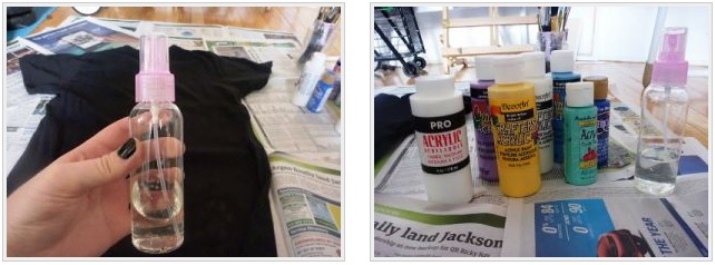
From a distance of your outstretched hand, apply a bleaching solution to the T-shirt, wait until it changes color and dries. Then, opening the paint, alternately dipping the brush in different colors, spray them with a T-shirt. It is more convenient to work out very small details with a toothbrush, spraying a small layer of paint directly above the fabric.
If desired, you can repeat the procedure with the second side of the product after the print on the front side is completely dry.
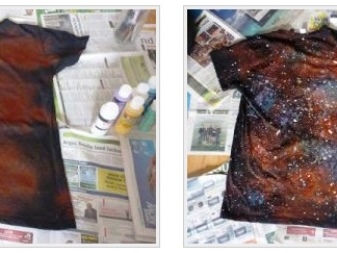
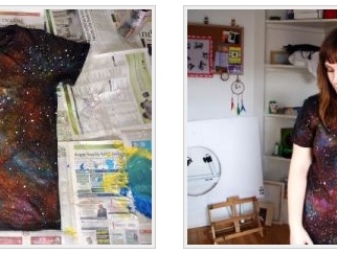
Figure in nodal technique
Nodular technique is inherently a kind of batik. The main difference from traditional painting on fabric is that, as a reserve (a substance that separates one color fragment from another, preventing the paints from mixing), not a special adhesive solution is used, but strings, ropes and bundles.

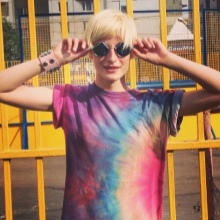
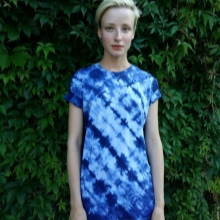
With the help of threads, nodules of different sizes are fixed on the fabric, which are lowered into the paint. As a result, the paint fills only the fragment that is separated by threads, and diverges with beautiful "rays" along the creases on the fabric.

Making nodules is easy enough. There are no patterns and special rules, the fabric can be folded and bandaged at your discretion. The main thing is to determine how large or small the color fragments will be, and carefully separate one from the other with the help of threads or rope.
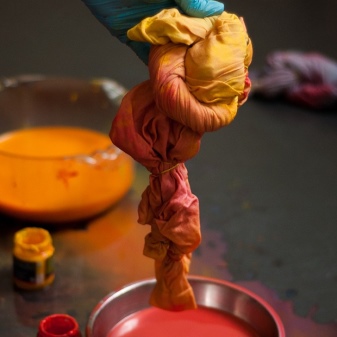
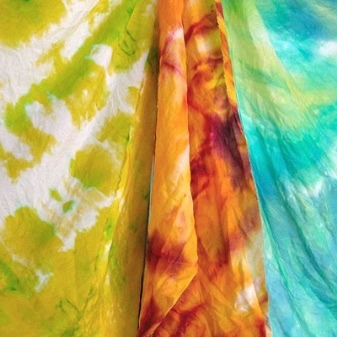
It is better to take white threads so that they do not shed during staining. Of course, this can give an additional element of decor, but it can also spoil the whole idea.
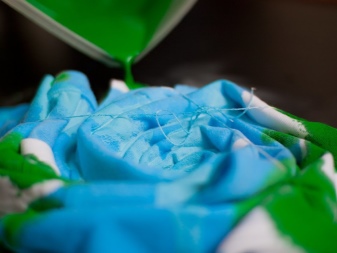

In addition to threads, buttons and pebbles are often used to fill a particular piece of fabric to make the paint more interesting.
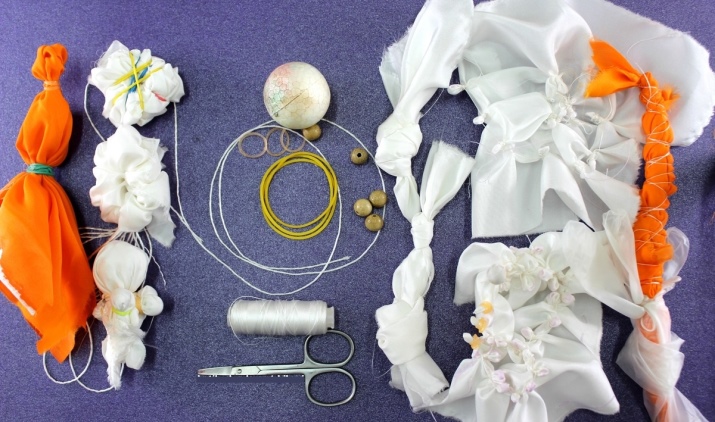
Nodular staining is performed in stages.
Preparation
The first stage is the choice of fabric and its preliminary preparation. Batik is applied to cotton, silk or wool products; color is preferred white. Depending on the idea, before tying knots, you can apply splashes, stripes, stains or patterns to the T-shirt.
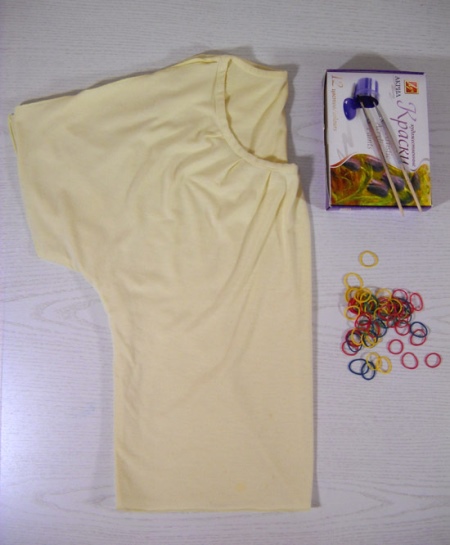
Node formation
The second stage is the most important. It depends on how the drawing will end up. After twisting the fabric in a certain way and tying knots, you can get circles, flowers, stripes, or you can make them arbitrarily, and then the pattern will be unpredictable and peculiar.
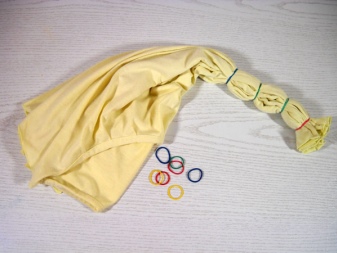
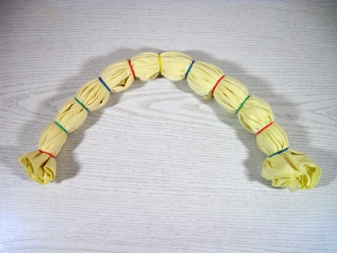
Fill nodes with color
The third stage involves the choice of method of staining. The most reliable is to alternately lower the nodules in a container with boiling colored water. This method guarantees the penetration of paint into all layers of the fabric and gives the effect of flowing from one color to another.
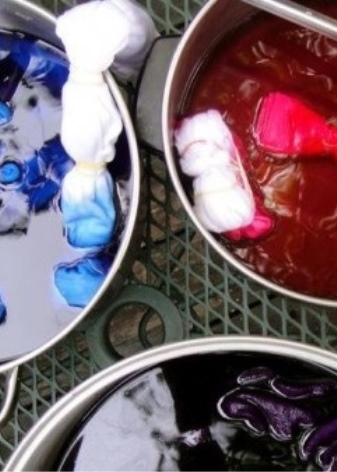
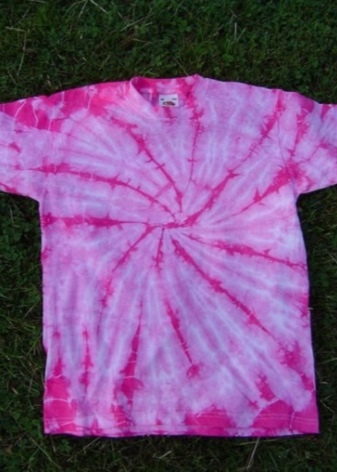
The fastest is the use of spray paint. For a lasting effect, it is enough to spray it on the texture of the fabric for several seconds, but there is a risk that the node will not completely dye.
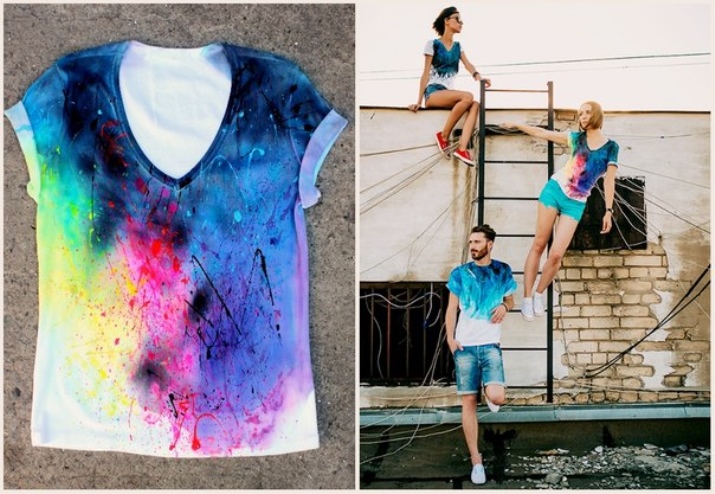
The longest and most expensive material, but also the most beautiful way as a result - the use of clean paint. If you want smooth and soft transitions, you need to moisten the knot before dipping it in the paint. If the priority is a bright, saturated ornament, the fabric of the T-shirt can be left dry.So, for coloring T-shirts with clean paint, first of all, determine the colors of your future T-shirt, put them in molds and dilute with a little warm water.

It is important to observe the proportions of paint and water. If the ratio of the paint is greater, then the color of the pattern on the T-shirt will be more saturated. But you do not need to make the solution very thick, otherwise it will lead to coarsening of the tissue. The solution should not be too watery either, as this will lead to a loss of color when the T-shirt dries.
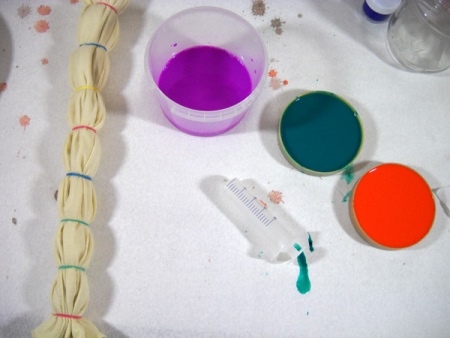
Then proceed directly to dyeing the t-shirt. We take the syringe, we type in the solution into it and we begin to squeeze the solution onto the T-shirt.
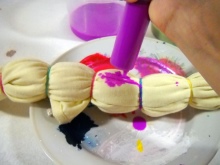
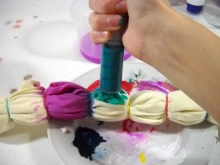
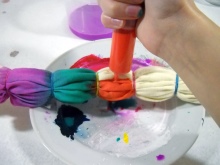
The more knots and colors involved, the more interesting the print.
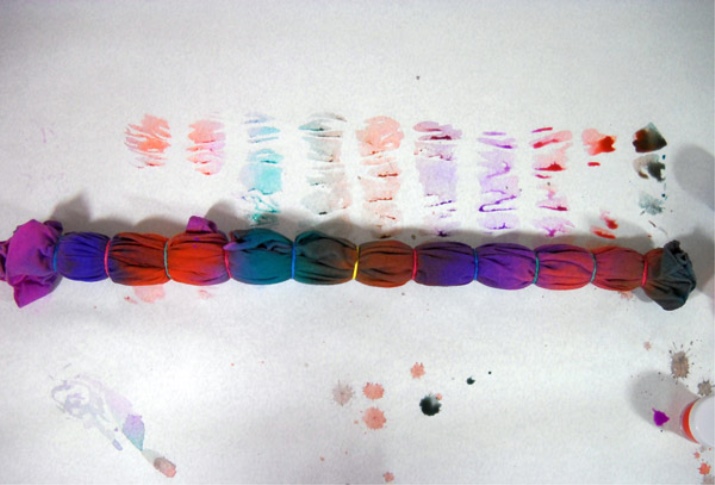
Fusing paint
When the product has dried, it needs to be ironed with an iron through a thin fabric without a pattern, so the paint will fix better and last longer.
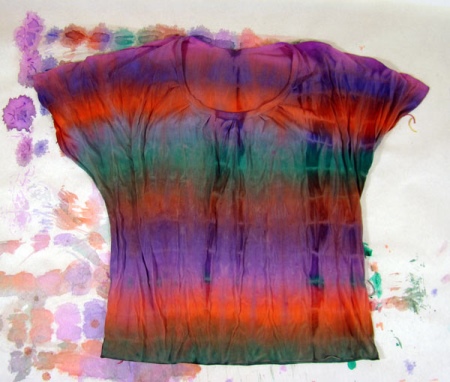
Fifth stage final. It is optional, but nevertheless, do not skip it. Nodular technique requires the use of a large amount of paint, which can begin to wash out during the first wash. To prevent this from happening, a day after fixing the paint, the T-shirt should be moistened and rinsed in running water, washing away excess acrylic. After that, the product is ready to wear and wash along with other things.
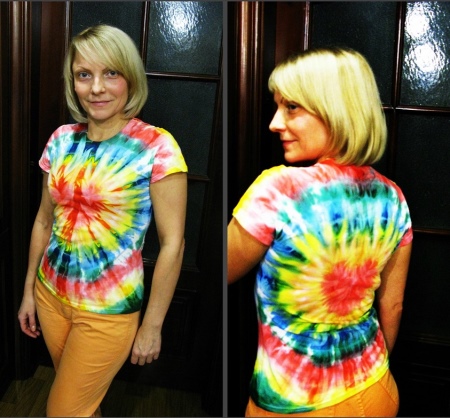
Home painting workshop
Drawing a picture on things with your own hands is a time-consuming process, but not complicated. The classic version on a white T-shirt is as follows: drawing a pattern according to the template, designing the contour, filling with color, fixing the paint with an iron.
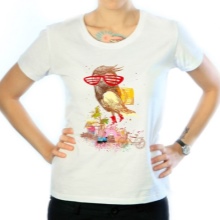

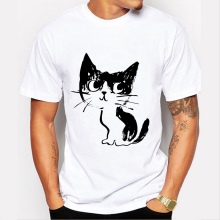
First you need to choose the t-shirt itself. Simple acrylic color is most suitable for acrylic paints.

The following is a choice of drawing. It can be invented from the head or borrowed on the Internet, the main thing is that the picture is clear enough.
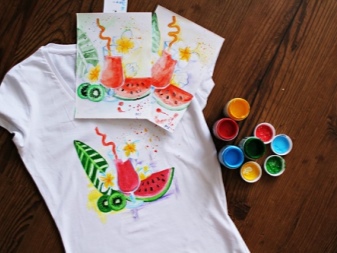
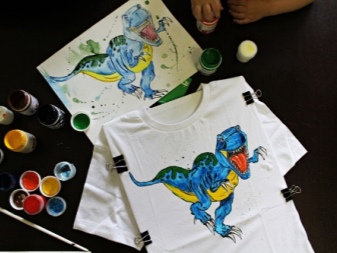
You can transfer the image to a T-shirt with a soft woodless pencil or felt-tip pens on the fabric. Carbon paper is also suitable, but you should be careful with it - it will not work to fix the wrong movement.
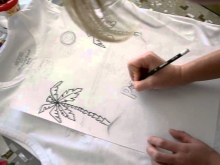

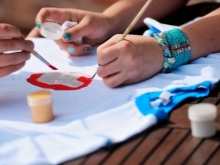
To prevent the fabric from shifting during operation, the drawing must be glued to a thick cardboard and placed inside the T-shirt, and secured with clothespins or tailor needles on top. You cannot stretch the fabric, otherwise the contours of the image will blur.
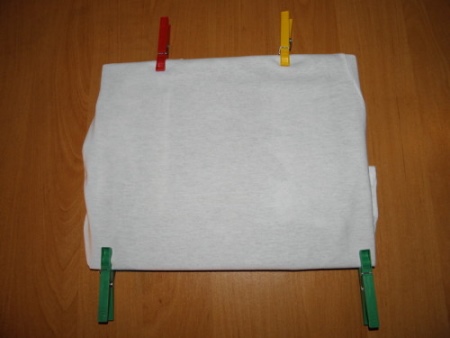
The drawing is applied carefully, without too much pressure on the pencil. The lines should be thin but noticeable.
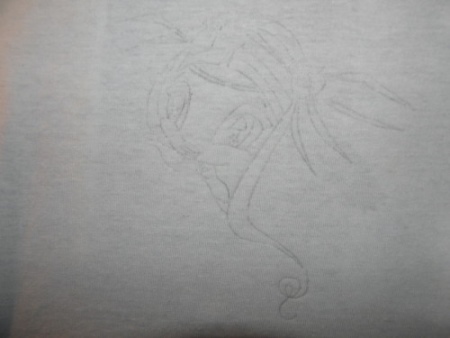
When the picture is fully translated, it's time to start painting the outline. To do this, it is recommended to use ready-made contours on the fabric, applicators or just the thinnest brush. In order not to grease the paint, you should move from top to bottom in the main drawing.
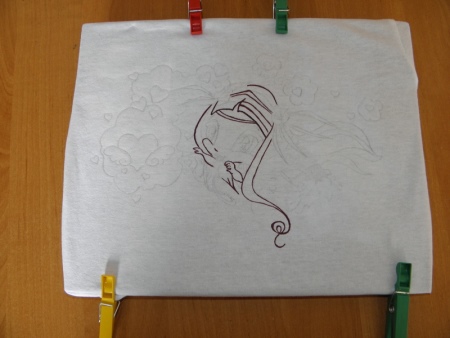
When the main circuit has dried, parts are worked out.

It is necessary to fill the drawing with paint without haste, carefully impregnating the fabric with acrylic. It’s best to start with light tones and then shade them with darker ones. Each color needs to dry out a bit before the next one is applied.
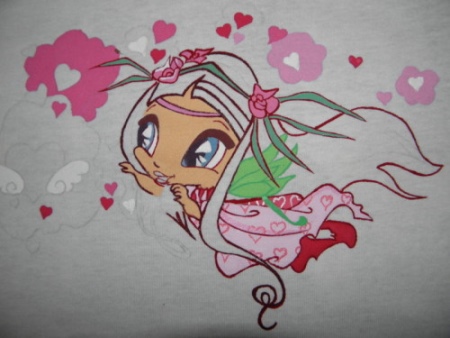
When the drawing is completely painted over, it is recommended to work out the contours again. It is difficult not to stain it with paint during operation, so it can look messy and spoil the overall impression. After the secondary study of the contour, the picture is finished.

It remains to wait until the paint has completely dried (from 24 to 48 hours) and fix it with an iron. The temperature regime should correspond to the type of fabric, without the use of steam. So that the paint does not stick to the sole of the iron, iron the t-shirt through a cotton napkin or turn it on the wrong side.
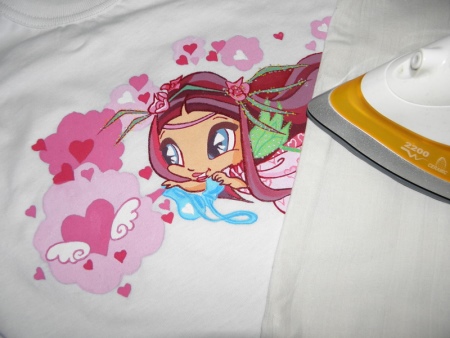
The product is ready. It perfectly tolerates repeated washing on hands and in a washing machine, does not fade and does not stain other things.
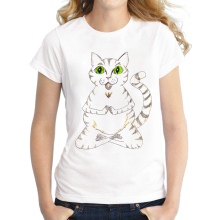

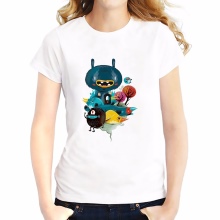
Interesting ideas
Drawings and inscriptions on t-shirts with their own hands can be completely diverse.
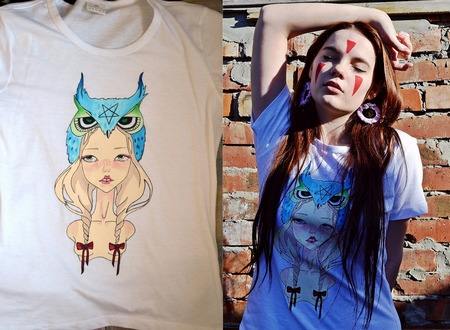
You can time them to a significant event, for example, to make t-shirts of the bride and groom, or to make an original birthday greeting. Funny prints on the round tummies of expectant mothers, t-shirts with ironic pictures and phrases, romantic patterns, bright batik, funny inscriptions, cartoon characters for children and adolescents look interesting.

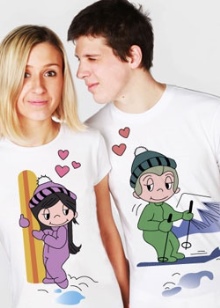
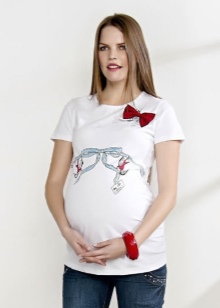
With the help of a drawing it is easy to indicate your belonging to a profession or subculture, to express your beliefs and interests, or just to get into a trend. All you need is imagination, tools and a little patience.

